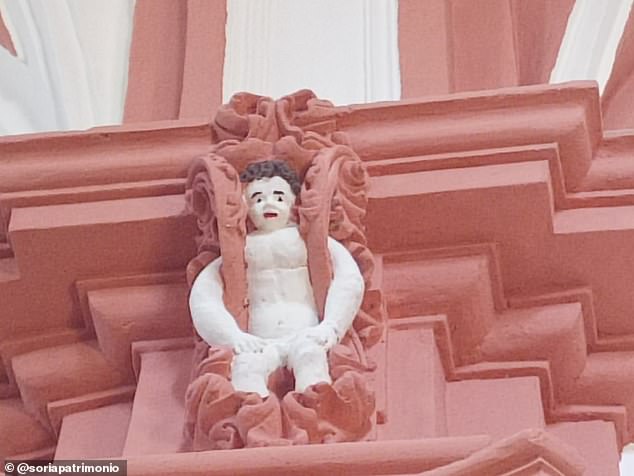The “disastrous” restoration of historic cherub sculptures in Spain has been met with derision and outrage, with experts criticising the “cartoonish” efforts as “an attack on heritage”.
Several decorations at the Hermitage of Our Lady of Mirón in Soria, northeast of Madrid, were roughly repainted in stark white with simple facial features and bright red lips, which stand out against the ornate and carefully decorated statues nearby.
Conservationists have called the transformation of the cherubs “disastrous” and “disrespectful” to the historic church and local heritage.
Francisco Manuel Espejo, president of the Association of Conservators and Restorers of Spain, said: ‘Those eyes and painted lips really catch your attention.
“We are not just talking about a failed restoration, but about an attack on our heritage.”
Spanish media compared the botched job to the famous restoration of the ‘Ecce Homo’ in 2012, which was mockingly dubbed ‘Christ the Monkey’ at the time.
The renovation work has sparked anger among conservation groups, who have called it an “attack” on heritage.

The diocese defended the work, saying that “some people like the end result and others don’t.”
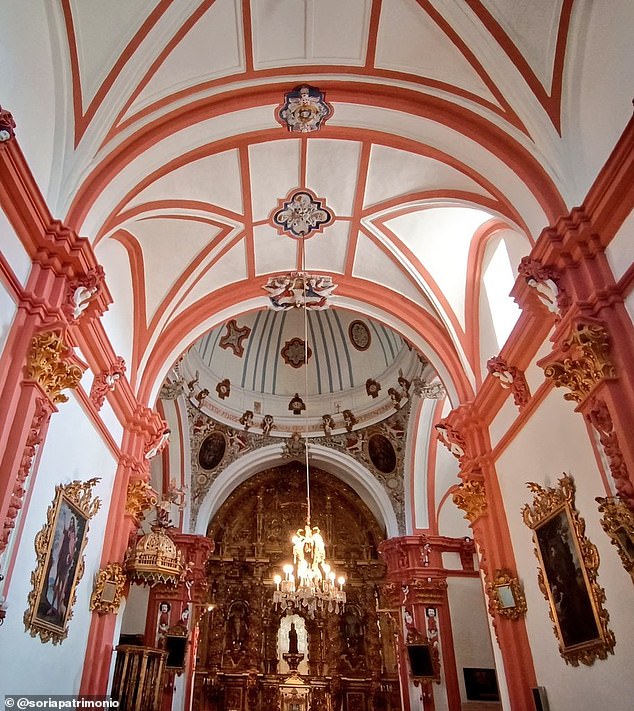
The latest renovation included painting the interior of the church and several cherub figures.
“I don’t think that, given the results, any specialist would have authorized doing something like that,” Espejo said.
He also questioned why a listed building, built in 1725, was subjected to such extensive refurbishment when it needed the approval of the town council and an expert.
The latest renovation included painting the interior of the church along with several cherub figures in the nave.
“Cases like this are quite rare, but we regret that they still occur, especially when we are still asking the authorities for a change in the law,” he added.
“Our heritage is not fully protected and that means things like this can still happen.”
Outraged by the quality of the work, the heritage group Soria Patrimonio published photos on social media.
They also included images of what the church looked like before it was painted bright pink with “cartoonish” cherubs.
A spokesman for the group said: ‘What have they done to the Hermitage of Our Lady of Mirón?
‘In the end we managed to make the decorative elements look outlined and the cherubs, which were previously white, look cartoonish.’
A spokesman for the diocese of Osma-Soria said: ‘The work was carried out with the appropriate authorisation and some people like the final result and others do not.
“We regret that there is some discontent, but it is a matter of taste.”
Soria City Council has not yet responded to the reaction.
One local commented: “I’m not laughing at him for being disrespectful, but who restored it, the least intelligent person in the village?”
Another said: ‘In my opinion the colour is not a problem, in fact many churches were originally like that, the problem is that it has been done with little care.’
Geek Mom wrote: ‘How awful, that’s not a restoration or anything.’
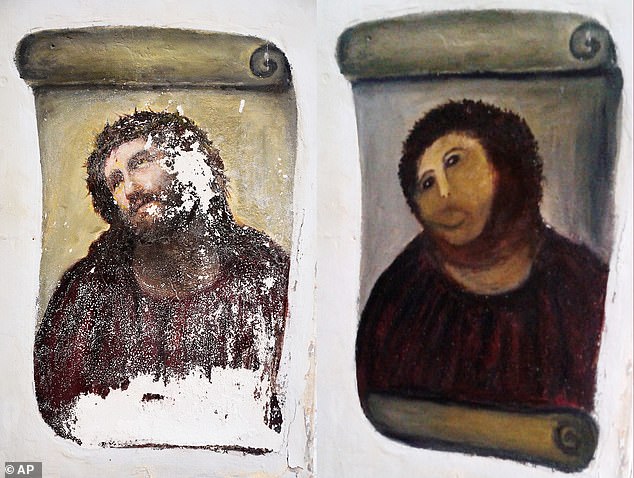
Cecilia Martine’s work on the 1910 painting Ecce Homo (Behold the Man), pictured left, went viral after its restoration was dubbed Beast Jesus, pictured right.
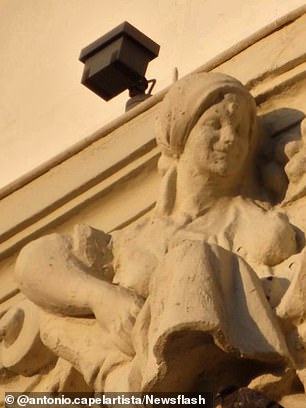
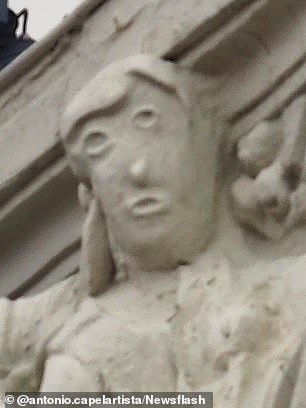
Another restoration in Palencia four years ago, which now (right) bears almost no resemblance to the original (left)
In 2020, another restored statue drew criticism – and comparisons to the restoration of the Ecce Homo – after its unveiling in the city of Palencia.
The statue was replaced after the original fell off during restoration work on the building it is part of, Spanish news site as.com reported.
“It looks more like a cartoon head than the artistic head of one of the most emblematic buildings in Palencia,” local painter Antonio Guzmán wrote in a Facebook post alongside before-and-after photos of the statue.
Almudena González, another local, wrote on Facebook that the restoration “makes me want to cry.”
“It’s terrible. And think of all the great artists we have.”
Local painter Guzman said the restoration resembled the infamous ‘Christ the Monkey’, a makeshift update of the Ecce Homo fresco in Borja that went viral in 2012 after a well-meaning local set to work improving its faded colours despite having no artistic training.
The effort was widely mocked and sparked accusations of vandalism from horrified art fans who said the depicted Jesus now looked like a monkey.
The fresco Ecce Homo (Behold the Man) was painted around 1930 by Elías García Martínez but is unrecognizable in its current form, which has been christened Behold the Ape.


